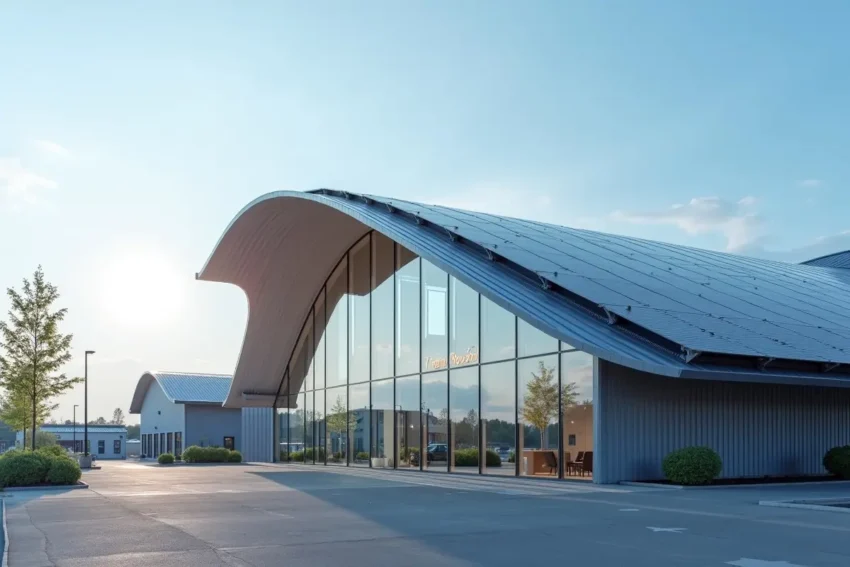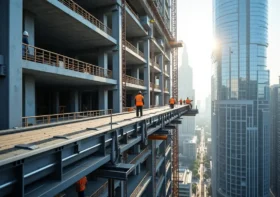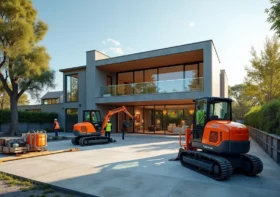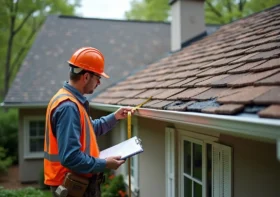From Aesthetics to Efficiency: The Importance of Roof Design

A roof does more than protect a home from rain or snow; it defines character, enhances comfort, and impacts long-term efficiency. For homeowners and property developers alike, roof design is a critical element that blends visual appeal with practical performance. By making thoughtful choices in materials, structure, and style, a roof can elevate a property’s value while ensuring resilience against the elements.
Contents
Balancing Beauty and Performance
Roofs are often one of the first architectural features noticed from the street, shaping impressions of a property’s style. From traditional gabled designs to sleek modern flat roofs, the visual appeal of roofing is central to curb appeal.
But beyond looks, design choices determine insulation, ventilation, and durability. Partnering with specialists offering roofing from Home Evolution Roofing or other trusted providers ensures that design does not sacrifice function. Architectural shingles can mimic natural materials like slate or cedar while offering better weather resistance and lower maintenance.
Similarly, metal roofing offers a contemporary aesthetic while excelling in longevity and energy efficiency. By combining beauty with performance, homeowners achieve a roof that enhances both lifestyle and property value.
The Role of Energy Efficiency
Roofing design is inseparable from energy performance. Insufficient insulation or poor ventilation often leads to heat escaping in the winter or unwanted heat buildup in the summer. This increases energy bills and reduces comfort indoors. Well-designed roofs act as an insulating barrier that stabilizes interior temperatures year-round.
Reflective roofing materials, for instance, reduce heat absorption in hot climates, while darker, denser materials can provide better insulation in colder regions. Proper ventilation prevents moisture buildup that can compromise insulation and lead to mold or structural damage. Energy-efficient roofing is not just a sustainability measure, it is a long-term financial strategy that reduces operating costs.
Materials That Match Purpose
Choosing the right materials is one of the most important steps in roof design. Asphalt shingles remain popular for their affordability and versatility, while slate, clay tiles, and metal offer durability and unique aesthetics. Each material comes with distinct advantages and maintenance needs, making it important to match choices to climate, budget, and architectural style.
Clay tiles work well in warm, dry climates and contribute to Mediterranean-style designs, while metal is excellent for areas with heavy snowfall due to its ability to shed snow easily. A roof designed with purpose ensures visual harmony and long-lasting protection suited to the local environment.
Safety and Structural Integrity
The design of a roof directly affects safety. Structural features like slope and load-bearing capacity determine how well the roof handles weather extremes, such as heavy snow, high winds, or torrential rain. Failing to account for these factors can result in leaks, collapse, or costly repairs.
Attention to design details like flashing around chimneys, gutters, and skylights improves water resistance. Incorporating fire-resistant materials, impact-resistant shingles, and storm-rated reinforcements adds additional layers of safety. A well-constructed roof is not only about aesthetics and comfort, it is a safeguard against unpredictable conditions.
Roofs as Long-Term Investments
Roof replacement is one of the largest home improvement expenses, but it is one of the most valuable. A thoughtfully designed roof can last decades, protect against costly damage, and improve resale value. Buyers are more likely to be drawn to properties with visually appealing, durable roofs that signal quality and care.
Certain roofing investments qualify for tax incentives or energy rebates when using eco-friendly materials or solar-ready designs. Thinking of a roof as a long-term investment encourages homeowners to prioritize quality and resilience over short-term savings.
Sustainability in Modern Roofing
Sustainability has become a defining focus in modern roofing design as both homeowners and builders seek ways to reduce environmental impact without sacrificing durability or style. A variety of eco-friendly approaches now exist, ranging from materials to structural innovations, each offering unique advantages for the planet and the property owner.
Green roofs, for example, incorporate vegetation that acts as a natural insulator, reducing heating and cooling needs while filtering pollutants from the air. Beyond their environmental benefits, they create usable outdoor spaces in dense urban areas, transforming rooftops into gardens, recreational areas, or even small habitats for wildlife.
Solar panel integration is another growing trend, where roofs are specifically designed or retrofitted to maximize energy generation. Pairing solar-ready roofing with energy-efficient materials allows homeowners to reduce utility bills while lowering their carbon footprint.
Roof design is a delicate balance of aesthetics, efficiency, and safety. From material selection to structural planning, every choice contributes to both short-term comfort and long-term resilience.
A roof is more than a covering; it is a defining feature of a home’s character, a shield against the elements, and a long-term investment in value and well-being.



